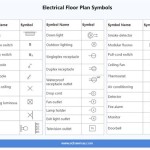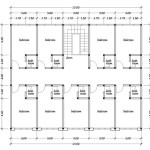How to Make Liquid Fertilizer for Houseplants at Home
Maintaining healthy and vibrant houseplants often requires more than just proper watering and sunlight. Fertilizing provides essential nutrients that support growth, flowering, and overall plant vigor. While commercial fertilizers are readily available, crafting homemade liquid fertilizer offers a cost-effective and environmentally conscious alternative. Utilizing readily available household materials allows for a tailored approach to plant nutrition, catering to the specific needs of various species.
The advantage of homemade liquid fertilizer extends beyond economic benefits. It allows for control over the ingredients and their concentrations, minimizing the risk of over-fertilization, a common pitfall with commercial products. Furthermore, utilizing organic byproducts reduces waste and promotes sustainable gardening practices. Understanding the basic principles of plant nutrition is crucial for formulating effective homemade fertilizers.
Plants require a range of macronutrients and micronutrients for optimal growth. The primary macronutrients are nitrogen (N), phosphorus (P), and potassium (K), often represented as the N-P-K ratio on fertilizer labels. Nitrogen promotes leafy growth, phosphorus supports root development and flowering, and potassium contributes to overall plant health and disease resistance. Micronutrients, though required in smaller quantities, are equally essential for various physiological processes.
This article will outline several methods for creating liquid fertilizer at home, detailing the ingredients, preparation methods, and appropriate application techniques for houseplants.
Understanding the Basics of Plant Nutrients
Before delving into specific recipes, it's essential to understand the role of each nutrient in plant health. Nitrogen is a key component of chlorophyll, the pigment responsible for photosynthesis. A nitrogen deficiency can manifest as yellowing leaves, stunted growth, and reduced flowering. Phosphorus plays a crucial role in energy transfer and is vital for root development, flower and fruit production, and seed formation. Potassium regulates water balance, enzyme activity, and nutrient transport. A potassium deficiency can lead to weakened stems, leaf curling, and increased susceptibility to diseases.
Micronutrients, such as iron, manganese, zinc, copper, boron, and molybdenum, are required in trace amounts but are essential for various enzymatic reactions and physiological processes. Deficiencies in micronutrients can lead to a range of symptoms, including chlorosis (yellowing of leaves), necrosis (tissue death), and distorted growth.
The ideal N-P-K ratio for houseplants varies depending on the species and stage of growth. Generally, a balanced fertilizer with a ratio of 10-10-10 or 20-20-20 is suitable for general maintenance. However, flowering plants may benefit from a fertilizer with a higher phosphorus content, while leafy plants may require more nitrogen.
When using homemade fertilizers, it’s important to observe plants closely for signs of nutrient deficiencies or excesses. Adjusting the fertilizer formulation or application frequency based on these observations ensures optimal plant health.
Methods for Making Homemade Liquid Fertilizer
Several readily available household materials can be repurposed to create effective liquid fertilizers. These methods are generally simple and require minimal equipment.
Compost Tea: Compost tea is a nutrient-rich liquid derived from steeping compost in water. It contains a wide range of macronutrients and micronutrients, as well as beneficial microorganisms that improve soil health. To make compost tea, fill a bucket with dechlorinated water. Place a shovelful of well-rotted compost in a porous bag, such as cheesecloth or pantyhose, and suspend it in the water. Allow the mixture to steep for 24-48 hours, stirring occasionally. The resulting liquid can be diluted with water to a tea-like color and used to water houseplants. Avoid using compost tea on evenings or during cloudy days, as plant leaves will remain wet and may attract pests.
Banana Peel Fertilizer: Banana peels are a rich source of potassium, a nutrient essential for flowering and fruit production. To make banana peel fertilizer, collect banana peels and either chop them into small pieces or leave them whole. Place the peels in a jar or container and cover them with water. Allow the mixture to steep for several days, until the water turns brown. Strain the liquid and dilute it with water before using it to water houseplants. The soaked banana peels can be used as mulch for plants.
Eggshell Fertilizer: Eggshells are composed primarily of calcium carbonate, which can help improve soil pH and provide essential calcium for plant growth. Calcium is important for cell wall development and nutrient uptake. To make eggshell fertilizer, rinse eggshells thoroughly and allow them to dry completely. Crush the dried eggshells into a fine powder using a blender or mortar and pestle. Mix the eggshell powder with water and allow it to steep for several days, stirring occasionally. Use the resulting liquid to water houseplants. Alternatively, sprinkle the eggshell powder directly onto the soil surface around plants.
Coffee Grounds Fertilizer: Coffee grounds are a source of nitrogen, phosphorus, and potassium, as well as micronutrients. They can also help improve soil drainage and aeration. To use coffee grounds as fertilizer, collect used coffee grounds and spread them out to dry. Once dry, sprinkle the coffee grounds around the base of houseplants and gently work them into the soil. Coffee grounds are acidic in nature and should be used sparingly on plants that prefer alkaline soil. You can also dilute brewed coffee with water in a 1:1 or 1:2 ratio and use it as liquid fertilizer. Make sure to use only plain black coffee or espresso without sugar, cream, or additives.
Fish Emulsion: Fish emulsion is a liquid fertilizer made from decomposed fish or fish waste. It is a rich source of nitrogen, phosphorus, potassium, and micronutrients. While commercially available, fish emulsion can be made at home, although the process can be odorous. To make homemade fish emulsion, combine fish scraps, molasses, and sawdust or leaves in a container. Add water to cover the mixture and allow it to ferment for several months, stirring occasionally. The resulting liquid can be diluted with water and used to fertilize houseplants. Due to the strong odor, it is best to use fish emulsion outdoors or in a well-ventilated area.
Wood Ash Fertilizer: Wood ash contains potash (potassium carbonate), calcium, and other trace minerals. It can be used to increase soil pH and provide essential nutrients for plant growth. However, wood ash is alkaline and should be used cautiously on plants that prefer acidic soil. To use wood ash as fertilizer, collect wood ash from a fireplace or wood-burning stove. Make sure the ash is from untreated wood, as treated wood may contain harmful chemicals. Mix the wood ash with water and allow it to settle. Use the clear liquid to water houseplants, avoiding the sediment at the bottom of the container. To make liquid fertilizer, add a tablespoon of ash to one gallon of water, stirring well and letting the wood ash settle before watering.
Application Techniques and Considerations
The frequency and method of application are crucial for maximizing the benefits of homemade liquid fertilizers. Over-fertilization can be as detrimental as under-fertilization, leading to nutrient burn, stunted growth, and other problems.
Dilution: Homemade liquid fertilizers are often concentrated and should be diluted with water before application. The appropriate dilution ratio depends on the type of fertilizer and the sensitivity of the plant. A general guideline is to start with a weak solution and gradually increase the concentration as needed. Diluting helps to minimize the risk of nutrient burn and ensures that plants can effectively absorb the nutrients.
Frequency: The frequency of application also depends on the type of fertilizer and the needs of the plant. During the growing season (spring and summer), houseplants generally require more frequent fertilization than during the dormant season (fall and winter). A common recommendation is to fertilize houseplants every 2-4 weeks during the growing season and reduce the frequency to once every 1-2 months during the dormant season. However, it's essential to observe plants closely for signs of nutrient deficiencies or excesses and adjust the frequency accordingly.
Application Method: Liquid fertilizers can be applied in several ways, including watering from the top, bottom watering, and foliar feeding. Watering from the top involves pouring the diluted fertilizer solution onto the soil surface, allowing it to soak into the root zone. Bottom watering involves placing the plant in a container of diluted fertilizer solution, allowing the soil to absorb the liquid from the bottom. Foliar feeding involves spraying the diluted fertilizer solution directly onto the leaves. Foliar feeding is particularly useful for addressing micronutrient deficiencies, as nutrients can be absorbed directly through the leaves.
Soil pH: Soil pH plays a crucial role in nutrient availability. Most houseplants prefer a slightly acidic to neutral soil pH (6.0-7.0). If the soil pH is too high or too low, certain nutrients may become unavailable to the plant, even if they are present in the soil. It is possible to test the soil pH using a soil testing kit and adjust it accordingly. Adding organic matter, such as compost or peat moss, can help improve soil pH and overall soil health. Some homemade fertilizers, such as coffee grounds and wood ash, can affect soil pH, so it's essential to use them judiciously and monitor the soil pH regularly.
Plant-Specific Needs: Different types of houseplants have different nutrient requirements. Flowering plants typically require more phosphorus than leafy plants, while cacti and succulents often prefer a low-nitrogen fertilizer. Researching the specific nutrient needs of individual plant species ensures that they receive the appropriate type and amount of fertilizer.
Observation and Adjustment: Regularly observing houseplants for signs of nutrient deficiencies or excesses is crucial for fine-tuning the fertilization regime. Yellowing leaves, stunted growth, and poor flowering are potential signs of nutrient deficiencies, while nutrient burn, characterized by brown or crispy leaf tips, indicates over-fertilization. Adjusting the fertilizer formulation, dilution ratio, or application frequency based on these observations ensures optimal plant health.
In conclusion, creating homemade liquid fertilizer for houseplants is a practical and environmentally friendly approach to plant care. By understanding the basic principles of plant nutrition and utilizing readily available household materials, one can tailor fertilizer formulations to meet the specific needs of various plant species. Careful observation, appropriate application techniques, and adjustments based on plant responses ensure healthy and vibrant houseplants.

Make A Simple Organic Fertilizer For Healthy Indoor Plants Garden Therapy
:max_bytes(150000):strip_icc()/make-your-own-fertilizer-1388159-hero-025e07a9b96840568b5eb5050f4bab10.jpg?strip=all)
How To Make Your Own Fertilizer

Top 10 Homemade Liquid Fertilizers Diy Plant Food That Will Transform Your Garden

9 Best Homemade Fertilizer For Houseplants Boost Growth Naturally

8 Organic Liquid Fertilizers You Can Make Feathers In The Woods

11 Diy Homemade Plant Fertilizers With Recipes Gardening

Houseplant Fertilizer Free Homemade All Purpose Plant Food Sub Spanish

Make A Simple Organic Fertilizer For Healthy Indoor Plants Garden Therapy

11 Diy Homemade Plant Fertilizers With Recipes Gardening

Make A Simple Organic Fertilizer For Healthy Indoor Plants Garden Therapy








